Democrats could still flip the Senate. Republicans could still keep the House. Here’s how.
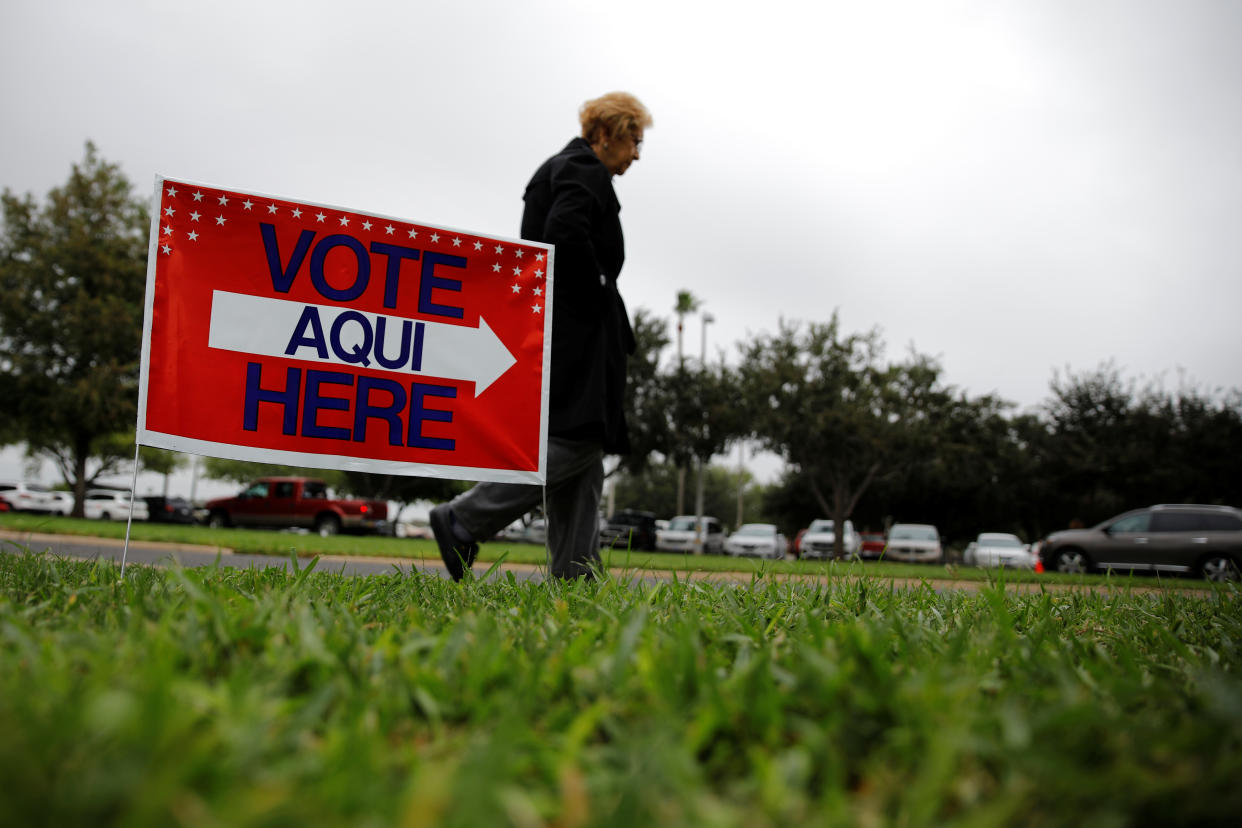

The big picture
According to the people who are paid to forecast elections — people like the maniacally detailed data journalists at FiveThirtyEight — Democrats currently have an 84.6 percent chance of flipping at least the 23 seats they need to retake control of the House on Nov. 6; Republicans, meanwhile, have almost the exact same chance (82.6 percent) of maintaining their narrow majority in the Senate.
The story of the last few weeks has been how the odds of these opposing outcomes have grown in tandem. (FiveThirtyEight’s forecasts incorporate recent polling as well as fundraising, past voting in the state, historical trends and more.) Today, Democrats are roughly nine points more likely to win the House than they were at the start of the month, and Republicans are roughly 10 points more likely to keep the Senate. In the wake of September’s polarizing Brett Kavanaugh hearings, both sides have become more engaged and energized — a development that seems to be boosting Republicans in the red states that dominate this year’s sharply skewed Senate map at the same time as it’s aiding Democrats in the swing districts that define the much broader House battlefield.
So that’s that, right? Game, set, match?
Not quite. If bespectacled nerds with Macbooks decided the results of our elections in advance, we wouldn’t have to vote. Democracy is messy, and probabilities are not preordained. Unlikely things can happen too. On Election Day 2016, the FiveThirtyEight model gave Donald Trump a 28.6 percent chance of winning the presidency — two in seven odds, which most pundits simply ignored.
To keep these predictions and prognostications in perspective, then, it’s useful to recall the following exchange from the American cinematic masterpiece Dumb and Dumber, in which Jim Carrey’s idiotic bowl-cut of a character, Lloyd Christmas, asks heiress Mary Swanson (Lauren Holly) what the “chances” are “of a guy like you and a girl like me ending up together.”
“Not good,” Swanson replies.
Christmas gulps. “You mean, not good like one out of a hundred?” he asks.
“I’d say more like one out of a million.”
Christmas pauses as he struggles to process this information. Suddenly a smile spreads across his face.
“So you’re telling me there’s a chance!” he cheers.
In politics, as in movies, there’s always a chance. And right now, according to FiveThirtyEight, that means a 15.4 percent chance of Republicans retaining the House and a 17.4 percent chance of Democrats retaking the Senate.
So what would have to happen for each of those improbable but entirely possible scenarios to play out on Election Day?
Let’s start with Democrats flipping the Senate. First things first: Much ado was made early this cycle about Dems having to defend 10 Senate seats in states that Trump won, and how difficult that was going to make it for them to gain any ground overall. But most of those seats — especially in states that Trump flipped, as opposed to states that always vote Republican in presidential elections — are looking pretty safe 10 days out.
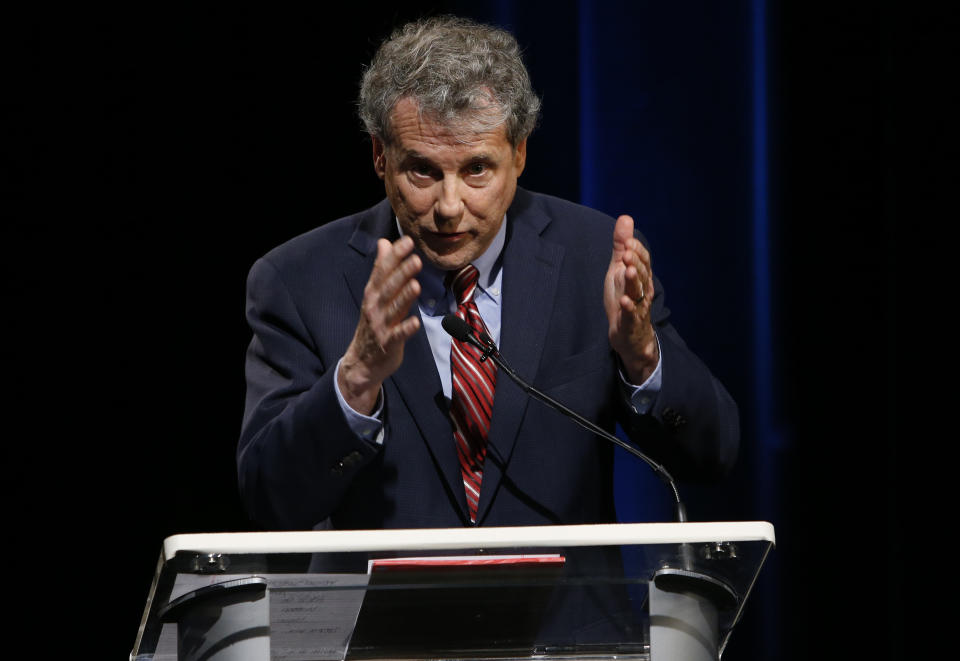
In Ohio, Sen. Sherrod Brown currently leads Republican challenger Jim Renacci by an average of 13.5 percentage points; in Wisconsin, Sen. Tammy Baldwin leads Leah Vukmir by an average of 13.1; in Pennsylvania, Sen. Bob Casey leads Lou Barletta by an average of 15.7; and in Michigan, Sen. Debbie Stabenow leads John James by an average of 14.3. FiveThirtyEight gives all of these Democratic incumbents very strong odds of winning reelection: from 29 in 30 (Brown) to 59 in 60 (Stabenow).
Either way, Democrats would have to win all four in any scenario that awards them control of the next Senate, just as they would have to win all three of the contests that are closer but still leaning about 90 percent Dem: Bob Menendez’s reelection in New Jersey, Joe Manchin’s reelection in West Virginia, and Tina Smith’s special election in Minnesota to replace Sen. Al Franken. In each of these cases, the Democrat already leads by an average of seven to 10 percentage points in the polls, so it’s not a stretch to imagine them prevailing.
On the flip side, Mississippi’s three-way Nov. 6 special election, which pits retiring Sen. Thad Cochran’s interim Republican replacement Cindy Hyde-Smith against fellow Republican Chris McDaniel and Democrat Mike Espy, is unlikely to go blue, even if Hyde-Smith fails to secure a majority in the first round and is forced into a post-Election Day runoff with Espy.
That leaves three other kinds of races to consider: Democratic-held tossups; Republican-held tossups; and Democratic-held seats that are leaning Republican. To win the Senate, Democrats would have to sweep the first category, which includes some of the marquee races of 2018: Joe Donnelly (D) vs. Mike Braun (R) in Indiana, Bill Nelson (D) vs. Rick Scott (R) in Florida, Claire McCaskill (D) vs. Josh Hawley (R) in Missouri and Jon Tester (D) vs. Matt Rosendale (R) in Montana.
Fortunately for the Dems, Montana isn’t looking like the heaviest of lifts; Tester leads by 6.2 percentage points, on average, and currently has a 6 in 7 chance of victory. Meanwhile, Donnelly (3.6 percent lead; 5 in 7 chance) and Nelson (4 percent lead; 3 in 4 chance) have a minor edge over their Republican challengers.
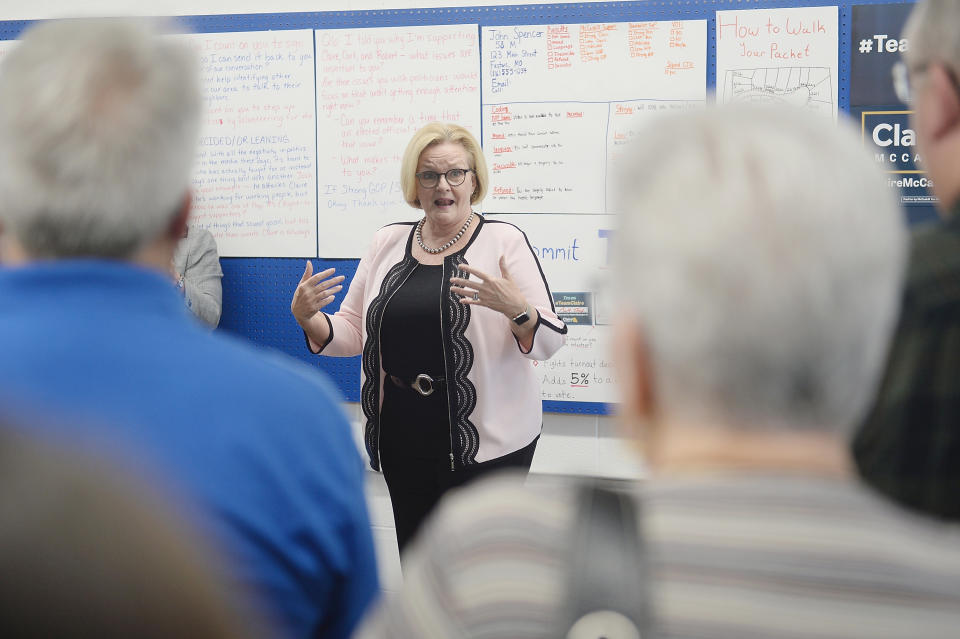
McCaskill is where the path really starts to narrow for Democrats. Along with North Dakota, where Democratic Sen. Heidi Heitkamp is trailing Republican Rep. Kevin Cramer by an average of 4 points in the polls, Missouri is one of two Democratic-held seats that currently favor the GOP or barely favor the Dems. Notice that North Dakota and Missouri are red, rural plains states that Trump won by wide margins: more than 18 points in Missouri and nearly 36 in North Dakota.
If Democratic turnout surges and both McCaskill and Heitkamp somehow manage to survive, chances are Democrats would go on to flip the Senate by winning their two best pickup opportunities as well: Arizona (where GOP Sen. Jeff Flake is retiring) and Nevada (where Hillary Clinton won in 2016). But if both McCaskill and Heitkamp lose, Dems would have to flip all four GOP tossup seats to regain control of the Senate — a near-impossible outcome to imagine.
The likelier path is a split decision: Heitkamp loses (current odds: 68 percent) and McCaskill wins (current odds: 57.5 percent). In that scenario, Dems would be down a seat, meaning they’d need to flip Nevada, Arizona and one of the two remaining Republican-held tossups: either Texas or Tennessee.
That’s not probable, but it’s not implausible, either. Moderate Democratic Rep. Kyrsten Sinema is slightly favored over Republican Rep. Martha McSally in Arizona (2.1-percent lead; 5 in 8 chance). In Nevada, Republican incumbent Dean Heller is ahead of his Democratic challenger, Rep. Jacky Rosen (1.9-percent lead; 3 in 5 chance), but state Democrats have been known to outperform the polls in recent elections thanks to their party’s vaunted turnout machine. Finally, Democrats Beto O’Rourke (Texas) and Phil Bredesen (Tennessee) aren’t that far behind their Republican rivals (Ted Cruz and Marsha Blackburn, respectively): an average of 5.3 points in O’Rourke’s case and only 3.6 points in Bredesen’s.
The reason forecasters now give O’Rourke and Bredesen each only a 20 percent chance of winning is because in politics, past tends to be prologue — and Democrats who are trailing in Texas and Tennessee don’t tend to beat expectations on Election Day.
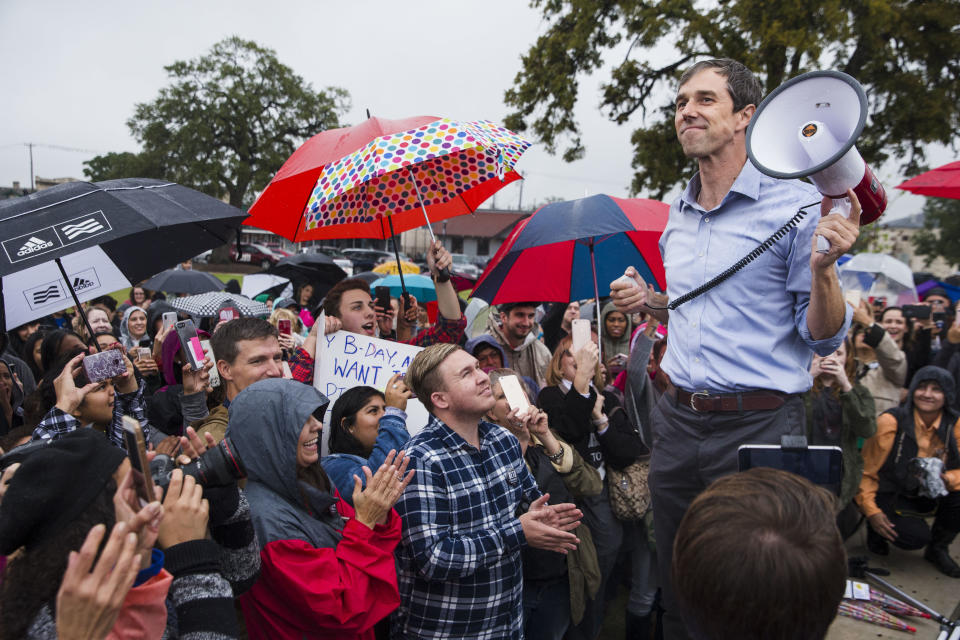
So for Dems to win the Senate, something unexpected is going to have to happen in at least one of those two states. Both O’Rourke and Bredesen claim to be atypical Democratic candidates: O’Rourke because he’s aiming to expand the electorate with the largest fundraising haul in Senate history and Bredesen because he’s a moderate who’s won statewide before. If some surprising trend starts to take shape on Election Day — notoriously low-turnout Latinos show up in record numbers, both in Texas and across the Southwest; Democratic mobilization in blue cities and purple suburbs exceeds all models — then O’Rourke or Bredesen could conceivably propel their party back into power in the Senate.
Likely? No. But there’s a chance.
The same goes for Republicans holding onto the House. Gaming out the various House scenarios is more complicated for several reasons: a lot fewer reliable polls of each contest, a lot more contests to keep track of. But broadly speaking, here’s how a Republican upset could unfold.
Today, 17 Republican-held House seats are either “likely” to go Democratic or “leaning” that way, according to the nonpartisan analysts at the Cook Political Report. At the same time, two Democratic House seats are either likely Republican or leaning that way. If those numbers hold — if Dems, in other words, can bank on netting 15 seats right off the bat — they’d still need to flip an additional eight seats to win the House.
At this point, most forecasters would point out that Democrats have many ways to win those eight seats and that Republicans have comparatively few ways to prevent or offset such losses. This is true. According to Cook, there is exactly one Democratic-held tossup in play (Minnesota’s open First Congressional District, along the state’s southern border, where Democrat Dan Feehan is competing with Republican Jim Hagedorn), and there are only two other Democratic-held districts nationwide, both in southern Nevada, that are not rated either likely or solidly Democratic. In contrast, there are currently 29 Republican-held tossups and another 26 Republican-held districts that merely “lean” Republican. That’s a lot of pickup opportunities for Dems.

So how could the GOP theoretically keep the House? Given the sheer number of competitive races, there would have to be some sort of unseen, systematic factor working in their favor — not a quirk here or a lucky break there, but a pervasive trend that forecasters failed to pick up on.
As it turns out, this has happened before. In 2016, the final national polling averages showed Clinton ahead of Trump by roughly four percentage points; she wound up winning the popular vote 48.2 percent to 46.1 percent, which wasn’t enough to propel her to an Electoral College victory. The polls were off by about two points, and almost all of them were off in the same direction. Analyst Nate Silver has explained why: state polls tend to amplify errors; Clinton ran up the score in blue states and underperformed in the Midwest; undecideds and late deciders broke for Trump. As a result, the data said a Trump victory was improbable — yet it still came to pass.
Two years later, a GOP House upset would look similar. As Cook’s Amy Walter recently noted, “Opinions about the president today basically mirror the vote for the president in 2016. The coalition that brought Trump to the White House, (white, non-college, overwhelmingly male), continue to give him high marks. Meanwhile, those that voted against him in 2016 — women, college-educated white voters and voters of color — dislike him as much today as they did back then.”
Walter continues:
For example, according to the Pew 2016 Validated Voter Study, Trump carried men by 52 percent and took 39 percent among women. Today, the NBC/Wall Street Journal poll finds Trump’s approval rating among men at 56 percent and at 38 percent among women. Basically, no change from election night 2016.
Here’s another example. In 2016, white voters supported Trump 54 percent to 39 percent for Clinton. Today, white voters give Trump a 54 percent job approval rating. Back in 2016, college educated white voters gave Trump 38 percent of the vote, while white voters without a college degree supported Trump with 64 percent of the vote. Today, Trump’s approval rating among white college voters is 38 percent and among white, non-college voters is 65 percent.
For much of the 2018 cycle, observers assumed that the usual midterm pattern would hold, and that the president’s base, dispirited by his unpopularity, wouldn’t turn out in the numbers necessary to prevent an opposition-party wave. But with Trump doubling down on his rallies and his rhetoric in the waning days of a campaign that’s being fought in some very red places — and with Trump voters seeming to reengage in the wake of the Kavanaugh hearings — could 2018 wind up being more of a rerun of 2016 than anyone expected?
Again, not likely. But there’s a chance.
The best of the rest
Why neglected governors’ races are more important than you think: As much of the nation focuses on what may be the most consequential congressional election in modern history, candidates for governor have largely been relegated by the media to second-tier status compared with their peers running for the U.S. Senate and House of Representatives, reports Yahoo News National Correspondent Alexander Nazaryan.
In all, the 36 gubernatorial races that will be decided on Nov. 6 could either add local strength to a so-called blue wave in Washington, or — should Republicans prevail in states like Nevada and Georgia — provide a state-based bulwark against a liberal takeover in Washington.
In Florida and Georgia, the young progressives Andrew Gillum and Stacey Abrams are both seeking to become the first African-American governors in their states. But those are only two of three dozen governors’ races that will be decided in two weeks.
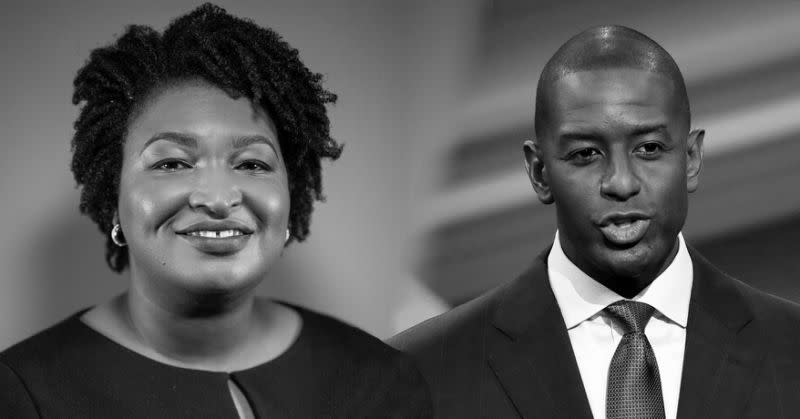
Nine of those races remain as unsettled. Notably, some of the contested gubernatorial seats are in the Midwest, where states that had long been under full Republican control (meaning that they held both chambers of the state legislature and the governorship) are seeing strong Democratic challengers. In Kansas, for example, Democratic candidate Laura Kelly is tied with her Republican competitor, close Trump associate Kris Kobach, according to polling by FiveThirtyEight. And in the red redoubt that is Oklahoma, Democrat Drew Edmondson is within 7 points of Republican Kevin Stitt. Trump beat Hillary Clinton there by 36 points in 2016, carrying all 82 counties in the Sooner State.
“You can imagine 10 to 12” of the 33 gubernatorial seats currently held by the GOP going to Democrats, says Navin Nayak, executive director of CAP Action at the Center for American Progress, a liberal think tank in Washington.
Republicans, meanwhile, “are in strong position to pick up the Alaska governorship,” says Jon Thompson, communications director for the Republican Governors Association. Thompson adds that Republicans “remain competitive in numerous other contests that could be a net pickup for Republicans, including Oregon, Connecticut, Colorado and Rhode Island.” He discounts notions of a blue wave, predicting that Republicans “will still hold a large majority of governorships after Election Day.” — Alexander Nazaryan
Senate race in Indiana tests “Hoosier” independence from Trump: Indiana prides itself on its free-thinking, common-sense approach to politics, but the U.S. Senate race there is testing just how strong that independent streak is, reports Yahoo News Senior Political Correspondent Jon Ward.
Democrat Sen. Joe Donnelly, the incumbent, is betting his reelection on the argument that he embodies that traditional Hoosier value and that Republican challenger Mike Braun has too closely aligned himself with President Trump.
“I told people I’d be bipartisan. I have been,” Donnelly told me over the summer.
But the Senate confirmation hearings for Supreme Court Justice Brett Kavanaugh supercharged an already hyperpartisan environment, firing up voters on the right.

Donnelly might win or lose based on how many Republican or conservative Democratic men in the state decide they hate polarization — or Trump — more than they may have been turned off by Senate Democrats during the Kavanaugh hearings.
That bloc of generally conservative male voters could join with reliable Democratic voters — notably college-educated women repulsed by Trump — to put Donnelly over the edge in an overwhelmingly conservative state.
But polls show Braun gaining steam in the final two weeks. The race — one of the key contests that will determine which party controls the U.S. Senate — has always been close and was always going to be a nail biter. But Braun has edged ahead in two recent polls, though one was conducted by his own campaign.
Republicans have pulled even in TV advertising this fall after being outspent over the summer. That’s a reason for the race to have tightened after many saw Donnelly in the driver’s seat for months. If Braun has an edge now, some think the Kavanaugh hearings are a big reason, along with Donnelly’s decision to vote against Trump’s nominee to the high court. – Jon Ward
Both parties go all in on Nevada’s bellwether Senate race: Anyone hoping to understand what’s about to happen on Nov. 6 might want to adopt a new slogan: “As Nevada goes, so go the midterms” — in particular, the hard-fought Senate contest between Democratic Rep. Jacky Rosen and incumbent Republican Sen. Dean Heller.
Many of the contours of the 2018 midterms have been clear for months. Democrats have long been enthusiastic about rebuking Trump’s GOP at the polls; white, college-educated women have broken sharply with the president and seem energized to turn out. What’s been less clear is the mood of the GOP base: Will they be discouraged (as they were in the 2006 midterms under President George W. Bush) or excited (as they were in 2010 and 2014 under President Barack Obama)? The same goes for Latinos, who tend not to show up in off-year elections and who have sounded less engaged and less anti-Trump in recent surveys than Democrats had hoped.

These are two of the biggest remaining questions of the cycle — and Nevada is uniquely positioned to answer both.
For one thing, each party is bringing its A game to the Silver State. The Democrats’ vaunted Reid machine — named after its architect, former Senate Majority Leader Harry Reid — is “still humming,” as Helen Kalla, communications director for the state party, recently told Yahoo News, with its unmatched record of partnering with the powerful Culinary Workers Union to turn out Latino voters in Clark County (Las Vegas). Meanwhile, some of the biggest names in Democratic politics — Obama, former Vice President Joe Biden, independent Vermont Sen. Bernie Sanders — have visited Nevada in recent days to rally the Democratic base.
Not to be outdone, the national GOP has invested more heavily in its Nevada ground game than ever before, employing dozens of paid staffers across the state; together they’ve trained thousands of volunteers, fellows, neighborhood team leaders and core team members, with a particular focus on rural, absentee balloting. And Trump himself visited Elko on Saturday, with Vice President Mike Pence to follow in Carson City this coming weekend.
There are signs that Republican efforts may be paying off. As the national intensity gap between Democrats and Republican narrows and conservatives reengage in the wake of the polarizing Brett Kavanaugh hearings — likely a factor in Heller’s improving poll numbers — the first few days of Nevada early voting suggest that Democratic dreams of a dispirited Trump base sitting 2018 out are unlikely to come true.
“Rural turnout [is] up [over previous midterms] and the GOP [is] destroying the Democrats there in early voting and absentees,” writes Jon Ralston, Nevada’s top political journalist.
At the same time, Democrats also seem to be performing well in the bluer and purpler parts of the state, with “double-digit” leads in Clark County and “five straight days” of victories in Washoe, the state’s key swing county. Polarization is the pattern, with passions running high on both sides. Meanwhile, a new poll taken for Rosen’s campaign by Latino Decisions, which offers bilingual interviewing and is known for its ability to accurately sample and poll Latinos, shows Rosen leading by nearly 50 percent among likely Latino voters — a margin that could ensure a Democratic victory if it actually materializes on Election Day.
With 11 days to go, these are two of the last big “ifs” of 2018 — in Nevada and across the nation. Which way the former goes will tell us a lot about where the latter is heading.
Menendez race pits ethical concerns against party loyalty, and loyalty is winning: Republican voters have already proven by their loyalty to Trump that they’re willing to overlook ethical concerns about their candidates.
To figure out whether the Age of Trump has also inured the broader populace to political malfeasance, you’d need to see how Democrats, who have railed relentlessly against the president’s “corruption” this cycle, react when accusations touch one of their own.

Enter Robert “Bob” Menendez, D-N.J. In 2015, Menendez — a senator since 2006 and a member of the House of Representatives for 13 years before that — was indicted on charges brought by Barack Obama’s Justice Department. The accusations stemmed from his relationship with a Florida doctor who gave him trips on his private plane and free nights in fancy Paris hotels, allegedly in exchange for various favors. Menendez was “severely admonished” by the Senate Ethics Committee. But his trial last year ended in a hung jury, and the Justice Department said in January that it was dropping the charges, freeing him to run for reelection. In a separate trial, the doctor was convicted of Medicare fraud and sentenced to 17 years in prison.
Menendez’s Republican opponent, Bob Hugin, has — no surprise here — made the scandal the centerpiece of his campaign, blanketing New Jersey’s ultra-expensive airwaves with months of ads about how the state’s sitting senator is a “disgrace” who “broke federal law.”
So how’s that working out for him? Not well enough, it seems.
In recent weeks the polling gap between Menendez and Hugin has grown. Three of the four latest nonpartisan polls show the incumbent clearing the crucial 50-percent mark, with his average lead doubling to nearly 10 percentage points. The data journalists at FiveThirtyEight currently give Menendez a 91 percent chance of victory.
According to Monmouth University’s Patrick Murray, the most respected political pollster in New Jersey, the reason Menendez is pulling away is simple.
“Partisan tribalism,” says Murray. “There are basically no issues that can persuade people to cross over to the other side anymore — including ethics and corruption.”
To that end, a majority of New Jersey voters (56 percent in a Monmouth poll) now say that their views of Trump — who commands a 55 percent disapproval rating in the state — are more important than their views of Menendez (31 percent), while an even larger majority (64 percent) says that Menendez’s behavior was no worse than that of any other politician.
Stacey Abrams focused on rural Georgia in debate, Brian Kemp on scaring voters: A debate this week in the Georgia governor’s race, between Stacey Abrams and Brian Kemp, was dominated by competing visions of the present and future put forward by the starkly contrasting candidates, reports Jon Ward.
Polls show a deadlocked race.
Abrams, the Democrat, repeatedly returned to her central plan for the state, which starts with Medicaid expansion. But she hammered away at her argument that this idea would help rural Georgians most of all, in contrast to the traditional Republican argument that expanding Medicaid only helps the urban poor.

The rural-versus-urban divide has dominated Georgia politics for decades and has a strong racial undertone. Until the ’60s, the state’s elections were heavily tilted in favor of rural counties where white Georgians held power and often prevented people of color from voting or made it extremely difficult, at the expense of more heavily populated and racially diverse urban areas like Atlanta.
But Abrams knows she will get plenty of votes from the urban areas. The question has been how she will win over voters in the suburbs and rural portions of Georgia. She has rejected the idea of watering down her liberalism. But on Tuesday night, there was no other theme she repeated more often than her desire to help rural Georgia, extending an open hand to the most conservative part of the state.
Abrams said that expanding Medicaid would create 56,000 jobs in the state and that 60 percent of those jobs would be outside the metro Atlanta area. But more fundamentally, she argued that expanding Medicaid would provide more stability for rural areas by keeping population in place and providing a foundation for future economic growth.
Whether or not rural conservatives vote for Abrams, the more important audience for her rural Georgia message might be moderate suburban whites who worry that Abrams is too left-wing and will hurt the state’s economy.
Kemp’s main goal for the night was to try to frighten these same suburban and exurban voters into running away from Abrams. “This should scare you to death,” he said at one point about her plans. — Jon Ward
In Alaska, a 1st-time House candidate takes on the nation’s most entrenched incumbent: It is a familiar story in this midterm election year — a woman who has never run for anything attends the Women’s March and decides to declare herself a candidate.
But this particular version comes with a few twists, reports Yahoo News Chief National Correspondent Lisa Belkin: The seat Alyse Galvin is running for is Alaska’s congressperson-at-large, and her opponent is the most entrenched incumbent in the country – the longest continuously serving member of Congress in history. Galvin, 52, was 8 years old when Don Young won the seat in a special election in 1973. Congressman Young, now 85, has beaten 46 other opponents since then.
And she just might win.

If she does, it would be a dramatic upset, replacing a man whose seniority brings enormous clout in Congress with a woman who, until a year ago, had never thought of running for office.
Galvin declared her candidacy in January and within four days had raised $70,000, all in small donations because she will not take money from corporate political action committees. A lifelong independent in a state where 15 percent of voters are Democrats and 56 percent are undeclared, she petitioned the Democratic Party for permission to run on its ballot, and after defeating two other Democrats in a primary this summer, she is both the Democratic and the independent nominee.
She began well behind — in the size of her war chest, in her name recognition, and in the polls. But the most recent Federal Election Commission filings show she has outraised Young for the fourth quarter in a row — bringing in $1.18 million to Young’s $1.02 million — and coming up to Election Day, she is nearly tied for cash on hand. Polls, which had shown her as far as 12 points behind at the start of the race, are narrowing too. Earlier this week, a poll from Public Policy Polling showed Young leading by just three points, 46 to 43 percent, and one from Alaska Survey Research put the candidates four points apart.
Galvin says she understands the odds and knows that the polling website FiveThirtyEight gives her just a 28.8 percent chance of winning in this traditionally Republican state. But she insists that “traditionally” does not apply right now.
Not only is the national political landscape unpredictable, but the one in Alaska just became more confusing, as Gov. Bill Walker, who had been running for reelection as an independent, suspended his campaign and endorsed Democrat Mark Begich, who he said had a better chance of beating the Republican, Mike Dunleavy.
“This is an extremely unusual election year,” Galvin said, days before that latest development, “which means unusual results should be expected.” — Lisa Belkin
Abigail Spanberger hopes to beat Rep. Dave Brat — and stand up for the CIA: The CIA has never been known as a hotbed of “radical left-wing Obama-Clinton Democrat[s],” but Rep. Dave Brat, the Republican incumbent in Virginia’s Seventh Congressional District, thinks he’s found one, reports Yahoo News’ Michael Walsh.
It’s his opponent, Abigail Spanberger, a former CIA officer who is defending America’s intelligence agencies against attacks from President Trump.

Spanberger, who served as an operations officer in the CIA for eight years, primarily in counterterrorism operations, entered the race in part because she saw “partisan politics threatening the country” she worked to protect. She is not pleased with President Trump’s repeated efforts to disparage the intelligence community’s consensus that Russia had launched a multifaceted campaign to disrupt American democracy.
Brat, a Tea Party-backed conservative who upset House Majority Leader Eric Cantor in the 2014 primary, is a strong Trump supporter and has been endorsed by the president.
Spanberger said her decision to run for Congress came the day of the House’s health care vote, when she felt Brat wasn’t listening to his constituents.
The Seventh Congressional District, which stretches from the suburbs west of Richmond to the countryside of central Virginia, is less heavily Republican than it was in previous election cycles because forced redistricting in 2016 changed its boundaries. This — together with Spanberger’s career in law enforcement and intelligence, which may appeal to more conservative voters — gives Democrats hope they can flip this seat.
Following GOP national strategy, Brat has tried to portray Spanberger in interviews, social media posts and campaign ads as a far-left zealot. He accused her of supporting open borders and sanctuary cities, abolishing ICE, reelecting Nancy Pelosi as House speaker and favoring a government-run single-payer health care system. Spanberger says she would not support Pelosi for speaker and doesn’t hold the other positions Brat attributes to her. Brat’s campaign did not respond to a request for comment from Yahoo News.
“Essentially, any statement he has made about me is almost likely to be untrue. He has lied about my policy stances time and time again. He has misrepresented my overall intentions and my political priorities,” Spanberger said.
The Cook Political Report considers the race a toss-up at this point. — Michael Walsh
Scorecard sources:
Generic ballot: FiveThirtyEight
Right track/wrong track: Gallup
Trump approval: FiveThirtyEight
At-risk seats in the Senate: Cook Political Report
At-risk seats in the House: Cook Political Report

_____
Read more Yahoo News midterms coverage:
Red-tide awakening: How Florida’s environmental woes could hurt Rick Scott
‘Outside agitators’ phrase resurfaces in Georgia governor’s race
Menendez race pits ethical concerns against party loyalty, and loyalty is winning
Portrait of a moderate district: NJ-11 leans R, but the race leans D
In Senate race, GOP Rep. Blackburn accuses her opponent of being a Democrat
Photos: Suspicious packages sent to top Democrats, CNN and others



